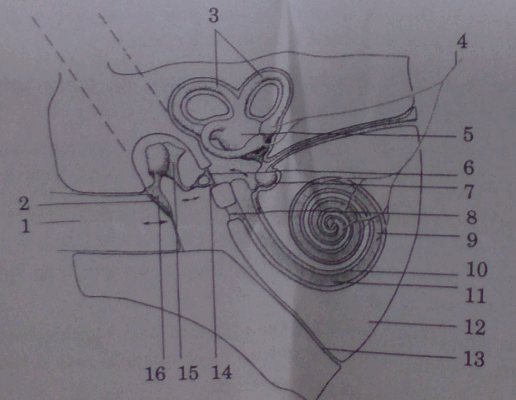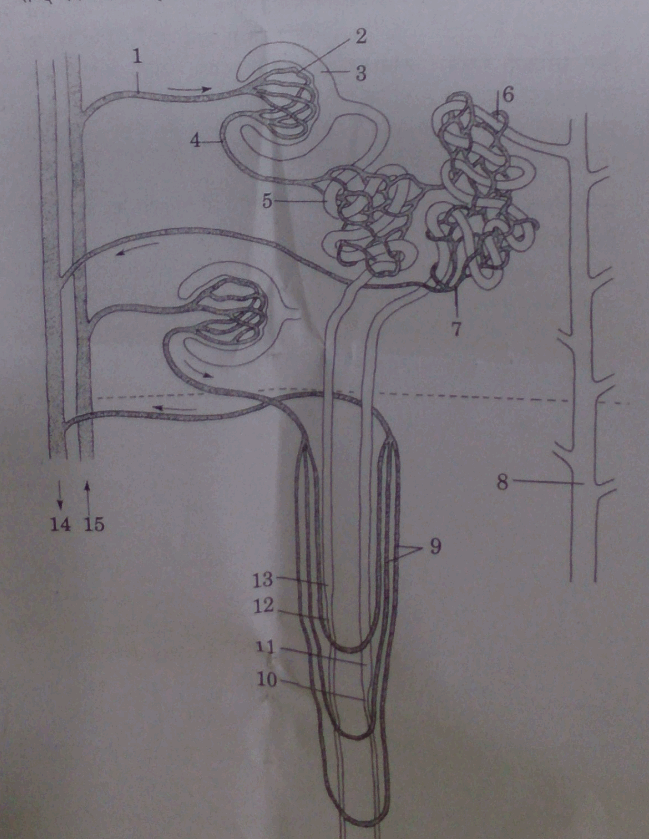|
#2
August 30th, 2016, 03:20 PM
| |||
| |||
| Re: UPSC Zoology Question Paper
Well below I have given you the UPSC IAS Zoology Question Paper so can you have a look UPSC Zoology Question Paper Paper-1: SECTION-A Q1. Answer the following in about 150 words each : 10×5=50 What are minor phyla? Enlist minor phyla with suitable examples. What is Jatmga bird mystry? Is it related with bird migration? Explain. Herdmania is a primitive and degenerate descendent of ancestral chordates’. Explain Apis is known tor social behaviour Discuss Polychaetes exhibit different modes of life adapted to habitats. Elaborate the statement. Q2. 15+15+20 Marks Give an account of locomotion in Protozoa indicating locomotor organelle with suitable examples. What are corals and coral reefs? Describe different types of coral reefs and their formation indicating different theories Enumerate the functions and main components of endoskeleton of vertebrates. Give an account of types of jaw suspensoria in vertebrates with suitable diagrams. Discuss parasitism in ‘Copepoda’. Comment on structural peculiarities of parasitic copepods. Give an illustrated account of the reproductive system, life history and developmentof Asterias. Q3. 15+15+20 Marks Discuss parasitism in ‘Copepoda’. Comment on structural peculiarities of parasitic copepods. Give an illustrated account of the reposetorive system, life history and development of Asterias. Give an account of locomotion in Pisces indicating the role of muscles and fins. How do some fish fly? Comment. Q4. 15+15+20 Marks Sphenodon is the most primitive and crocodilians are most advanced of all living Reptiles’. Discuss the statement. Give an account of fresh water, egg laying and pouched mammals with suitable examples. Give an account of gills and accessory respiratory organs in vertebrates with suitable examples. Paper-1: SECTION-B Q5. Answer following: 10 x 5 =50 What is ‘Ganga action plan’? Explain. Explain the role of pheromones in alarm spreading ‘Biotechnology is a vital tool in modern forensic science.’ Comment Differentiate between one-way and two-way Analysis of Comment on its applications in biostatistics. Electrophoresis is a valuable tool in resolving cryptic species complexes. Discuss Q6. 15+15+20 Marks Discuss social hierarchies in Primates. What is meant by distribution? Explain patterns of distribution in natural populations. What are biogeochemical cycles? Discuss nitrogen cycle indicating the role of atmospheric N-fixation, the role of bacteria and the impact of human activity. Q7. 15+15+20 Marks What is chromosome painting? Comment on its principles and scope. Give an account of causes and consequences of pollution of aquatic resources and the problem of cultural eutrophication. Suggest measures for abatement of water degradation. Define biodiversity hot-spot and mention the criteria of its selection. Write about biodiversity hot-spots of the Indian sub-region giving their salient features. Q8. 15+15+20 Marks What is Euphenics? Explain its use for improvement of human welfare Discuss the status and scope of prawn culture in India. Mention commercially viable Species of fresh water and brackish water prawns. What are transgenic animals? How are they produced? Explain their contributions to comment on ethical concerns in relation to transgenesis 20 Paper-2: SECTION-A Q1. Answer following questions: 10 x 5=50 Marks List and illustrate the components of biological Membranes in terms of their arrangement , role in the maintenance of feudicity, permeability and signal reception and translation. Arrange the sequential enzymatic participations in DNA replication. Describe their specific role in each step. 10 Define operon. Give the similarities and differences between tryptophan and arabinose operon, with a focus on attenuation. What is mutagenesis ‘ Explain with diagrams how mutagens cause genetic changes. Narrate with suitable examples he use of ribozymes m health care and agriculture. Q2. 15+20+15 Marks What are Rb and P53 proteins? How do they regulate the cell cycle? How do they protect the cell from carcinogenesis? Illustrate the different theories regarding the origin of life with special reference to protein evolution. Define the characters of DNA vectors. Explain with diagrams how those vectors function in a variety of situations. Q3. 15+20+15 Marks “Isolation is the key factor in evolution.” Justify the statement giving suitable examples from geographical and reproductive isolation. Give the characteristic features of ancestors of elephants and give progressive evolutions that have occurred during various geological times resulting in the emergence of the modern day elephant Define Mimicry. How does it occur. How has mimicry evolved in the animal kingdom? Give examples. Q4. 20+15+15 Marks Q4a.The Genotype of the parent is as under: 2n + XhY x 2n+X0xh Indicate the type of Gametes that will be formed and character represented by their offspring. Also indicate whether the parents are carriers or free from disorder. Find out : Percentage of carriers. Percentage of haemophilic sons and daughters Percentage of normal offsprings. Why does haemophilia occur? Give the symptoms of haemophilia. How is haemophilia genetically inherited? Q4b. What are giant chromosomes? Name them. State their locations and illustrate their structures. How do they function? Q4c. What is ICZN? Explain the principle, scope and limitations in the present day scenario of nomenclature. Paper-2: SECTION-B Q5: Answer following 10 x 5=50 Q5a. Describe with suitable diagrams the role of G-protein in the synthesis of C-AMP. Demonstrate how C-AMP activate protein kinase. Q5b. What are vitamins and co-enzymes? Describe fat soluble vitamins with examples. Q5c. Label the figure and answer the following questions.  Name the parts. Name the inner ossicles. Name the parts of cochlea. What is the organ of corti? What are the steps by which sound waves at the ear drum cause impose generation in the cells of organ of corti? Q5d.Differentiate between saturated and unsaturated fatty acids and their functions. Q5e.Differentiate between Innate and Adaptive immunity. Justify your answer with suitable examples. Q6. 20+15+15 Marks Explain with diagrams the molecular mechanism of contraction of skeletal muscles. Discuss the role of ions and bioenergetics in muscle contraction. Attribute the cause(s) for muscle cramps. What is metamorphosis? Differentiate between retrogressive and progressive metamorphosis, with figures and examples. How are they regulated? Define hormones. Distinguish between steroid and peptide hormones. Give the name of the hormones and its mechanism of action that uses Ca+2 and/or Calcitonin as second messenger. Q7. 15+20+15 Marks What are caspase enzymes? Narrate their crucial role in cell death. Differentiate between totipotent and multipotent cells with suitable examples. Explain the use of stem cells in human diseases. What is an active site? How doe* enzyme catalysis take place in an active site? Explain with suitable examples. Q8(a) Label the parts of nephron and answer the following questions. 20 marks.  Which region of the kidney contains malpighian body, loop of Henle and collecting ducts? What is Glomerular filtration rate? Write the steps of urine formation. What is the effect of vasopressin, oxytocin and aldosterone in renal function? What is the holding capacity of urinary bladder in man and the term used for the discharge of urine? |